This piece explores and challenges the art-making practices typical of many art classrooms which focus on a normative body able to operate with precise mark-making. Rather than approach disability and nonnormative bodies as a challenge to overcome possibilities are presented which are both inclusive and intentional about their focus on mark-making and art production which is freeform and does not require precision or “perfection” in its product. Doodling is a proposed anti-ableist practice as it allows for the natural abilities of any given artist to be expressed, and is likened to automatic drawing in its ability to respond to environments and stimuli, doodles can be done in a wide variety of situations and then transformed both alone and collaboratively giving a golden opportunity for students to have meaningful interactions without the barrier of alternate assignments which- while often meaningful and necessary- can present limits in ability to collaborate and interact with classmates. I highly encourage reading this article as there is a second proposed anti-ableist idea known as A/r/tography which further explores doodles as an anti-ableist art focus.
This book is a comprehensive guide to the intersection between art education and special education which covers a vast amount of information- everything from assessment to instructional practices to the history of disability in educational fields. The content is incredibly comprehensive and I frequently find myself coming back to it as a reference guide to inclusive practices, it has a special focused on evidence-based best practices which makes this a fantastic starting point for going further into this subject!
This article is a strong and comprehensive primer on important concepts in disability studies and anti-ableism both inside and outside the framework of art education. With its discussions of ableist narratives prominent in the art world, critiques of paternalistic and infantilizing practices in the art education field, and exploration of the nature of disability in art this is a must-read for any art educator. With this reading, one can gain an understanding of the many issues present in the intersection between disability and art ranging from the fetishization and romanticization of mentally ill artists, the euphemistic terminology used in reference to disability, the role of aesthetics in furthering ableist narratives, and a number of other subjects demonstrating the clear need for interdisciplinary collaboration between the fields of art education and disability studies.
This article puts forward a model for a program which has successfully made progress in preparing preservice art educators for effectively planning for and teaching disabled students in their classrooms. Many first-year teachers express that they were not adequately prepared for teaching students with disabilities, this program seeks to bridge that gap by giving practical in-class experience with established intervention specialists and special education students, allowing preservice teachers to find techniques and be supported by experienced in-field professionals and form relationships with students.
This article documents an effort to build a comprehensive resource center for art educators and special educators to share and access information about collaboration between our fields, and compile resources which do explore this oft-overlooked yet vital intersection between fields. Too frequently, these fields do not have access about information about one another, and information from one field which would be a boon for the other to have is not available. Building a resource center for collaboration between these fields is a step forward for both as we collaborate more and more to better serve our students with effective support for their needs as well as giving disabled students access to art education.
This book is a comprehensive strategy guide for classroom management, lesson planning, on-the-fly adaptation, and near anything else a teacher seeking to improve the inclusivity of their classroom for disabled students. This book addresses a wide variety of disabilities and provides an introduction to strategies for most effectively teaching under the variety of circumstances one may encounter. In terms of starter-kits for inclusion in the art classroom, this book is a must-have (or, given that it is out of print, a must-borrow from your nearest library)
Much like John Derby’s article, this explores and critiques practices and ideological frameworks in art education which contribute to the exclusion and marginalization of disabled students in an art classroom. The core of this article is conceptualizing disability as a socially minoritized status, while disability is commonly viewed through a medicalized lens as something which is non-normative and in need of correction by medical professionals, therapists, teachers, and paraprofessionals. Here we explore disability through a social model viewing disability wholistically as primarily a result of living in surroundings not intended to include those who do not have normative body-mind experiences. Kallio-Tavin presents the need to focus on disability as a wider societal issue rather than an issue solely with a disabled individual, and especially highlights the need to focus on disabled people’s voices as they express what would truly help them to thrive rather than what many would commonly assume without their input to be best.
This explores the role of an adaptive art specialist in an art classroom, a role many are likely not familiar with within a building or school district. The role of an adaptive art specialist is to support special needs students in an art room with their knowledge of alternative instructional techniques and adaptive equipment while also being well-informed about a students’ needs, they typically work in tandem with art educators utilizing model-teaching, in-classroom support, working individually with students, and taking on any number of roles in order to better achieve access and equity in art education. Adaptive Art Specialists are few and far between, and typically they are working across multiple buildings if not an entire district. Despite the fact that many districts do not employ an adaptive arts specialist, this article demonstrates just how valuable it is to have an informed expert in this field within a school.
This literature review gives a strong basis for understanding what the benefits are of integrating arts into the core curriculum of both general education programs and special education programs. It includes a review of literature demonstrating the supported benefits of the arts in encouraging the development of social skills and emotional expression, while simultaneously supporting academic achievement. This review also discussed a number of programs successfully integrating special education and art education, providing a framework for ideas for new programs around the country
This article addresses the historical biases within education, especially within art education and the recency of special needs students being included within art rooms. I find it to be highly important that we remember the historical exclusion students have faced from our field, and this article breaks down the many biases which are present and linger in art rooms. This gives insight into the historical flaws of education while also showing the ways forward as educators break down existing biases and make strides towards equity and inclusion.
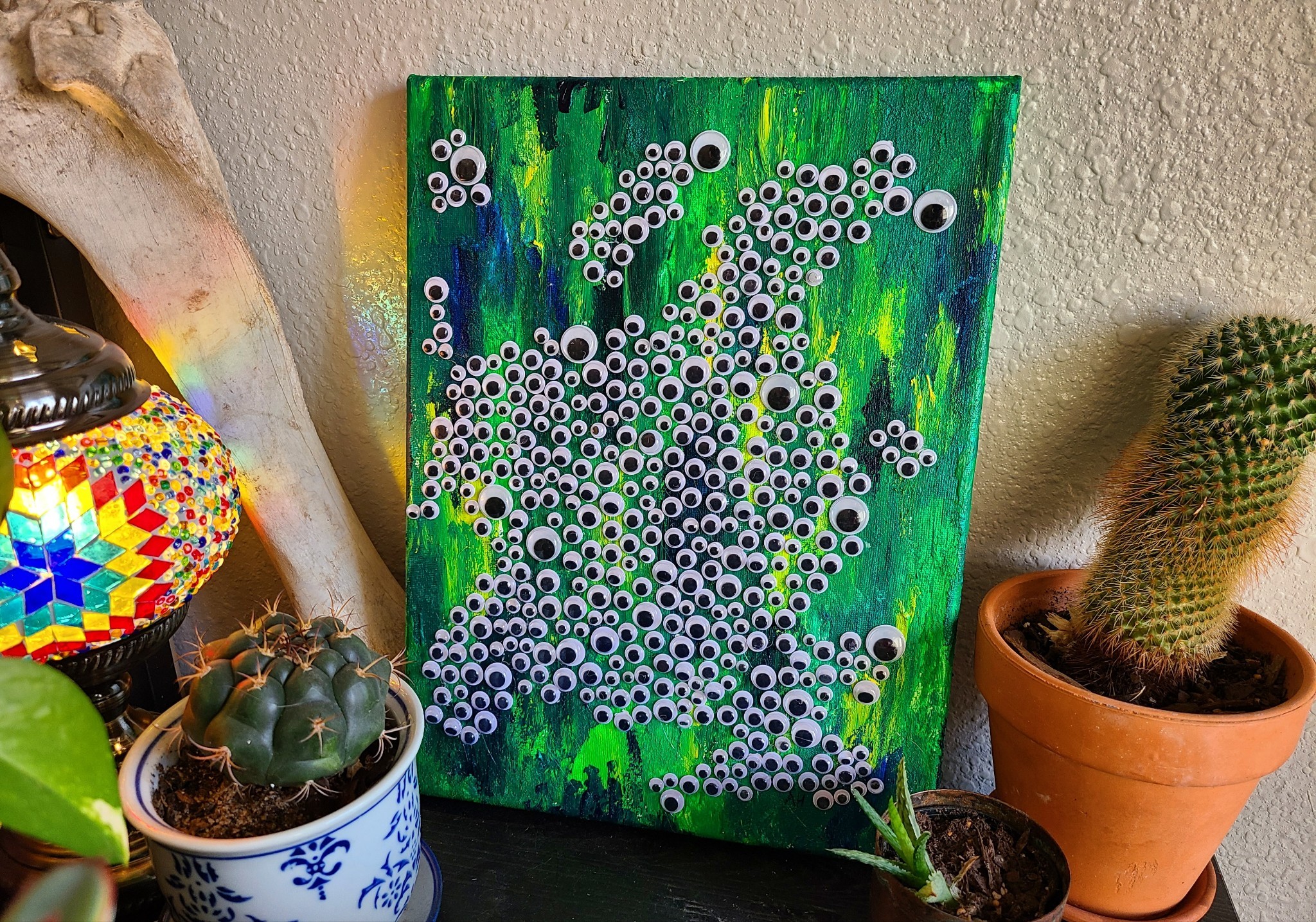 This piece is one I stumbled upon which I immediately connected to as someone who is both visibly disabled as a cane user, and experiences aversion to eye contact. When you are visibly disabled, every time you step outside you are invariably stared at and your simple everyday tasks become the subject of strangers' curiosity and/or revulsion- it's almost worse when they pretend not to be looking, at least those who stare openly are honest about their interest. I can welcome innocent curiosity far more than staring knowing your gaze is unwelcome. The feelings are similar viewing this piece as a statement about aversion to eye contact, so many are taught that eye contact is mandatory and not optional, and for someone like me where eye contact is uncomfortable and unnatural I frequently feel as though I've gone through my life constanly participating in something I neither understand nor enjoy.
This piece is one I stumbled upon which I immediately connected to as someone who is both visibly disabled as a cane user, and experiences aversion to eye contact. When you are visibly disabled, every time you step outside you are invariably stared at and your simple everyday tasks become the subject of strangers' curiosity and/or revulsion- it's almost worse when they pretend not to be looking, at least those who stare openly are honest about their interest. I can welcome innocent curiosity far more than staring knowing your gaze is unwelcome. The feelings are similar viewing this piece as a statement about aversion to eye contact, so many are taught that eye contact is mandatory and not optional, and for someone like me where eye contact is uncomfortable and unnatural I frequently feel as though I've gone through my life constanly participating in something I neither understand nor enjoy.
 This piece explores the intersection between being a teacher and being disabled, and the struggles that can entail. Limited sick days, a physically and emotionally demanding job, and the fact that the education system is not made for disabled people on any level. And yet, this is important work, work that is rewarding and fulfilling yet structurally flawed. In the source of this image you can read the original caption and hear about another disabled educator's input on the need for reform in the education system which will drive us towards a model which allows disabled people to participate fully without sacrificing their health and needs for a job which does not truly need this of them.
This piece explores the intersection between being a teacher and being disabled, and the struggles that can entail. Limited sick days, a physically and emotionally demanding job, and the fact that the education system is not made for disabled people on any level. And yet, this is important work, work that is rewarding and fulfilling yet structurally flawed. In the source of this image you can read the original caption and hear about another disabled educator's input on the need for reform in the education system which will drive us towards a model which allows disabled people to participate fully without sacrificing their health and needs for a job which does not truly need this of them.
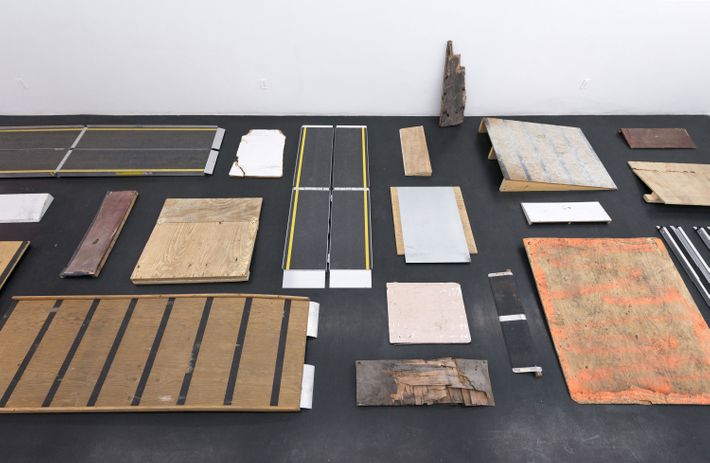 Likely one of the most visible and well-known examples of accessible architecture, ramps are a structure many encounter every day. This piece is an installation by a disabled artist which explores the sheer variety of forms of something which has an ultimately simple form- each ramp present in this piece is made of different materials, has differing dimensions, and differs in how usable it is for the public at large. Some are permanent structures, some are improvised, some are collapsible and some are rigid. This, to me, is a powerful show of just how different accessibility can look for better or for worse- some of these ramps are easy to get up in a typical wheelchair, some are likely treacherous and difficult to traverse, and many sit on a spectrum between perfectly usable and being hardly better than having no ramp at all. I encourage those who read this to seek out other images of this installation and explore the variety of forms something as simple as a ramp can take on.
Likely one of the most visible and well-known examples of accessible architecture, ramps are a structure many encounter every day. This piece is an installation by a disabled artist which explores the sheer variety of forms of something which has an ultimately simple form- each ramp present in this piece is made of different materials, has differing dimensions, and differs in how usable it is for the public at large. Some are permanent structures, some are improvised, some are collapsible and some are rigid. This, to me, is a powerful show of just how different accessibility can look for better or for worse- some of these ramps are easy to get up in a typical wheelchair, some are likely treacherous and difficult to traverse, and many sit on a spectrum between perfectly usable and being hardly better than having no ramp at all. I encourage those who read this to seek out other images of this installation and explore the variety of forms something as simple as a ramp can take on.
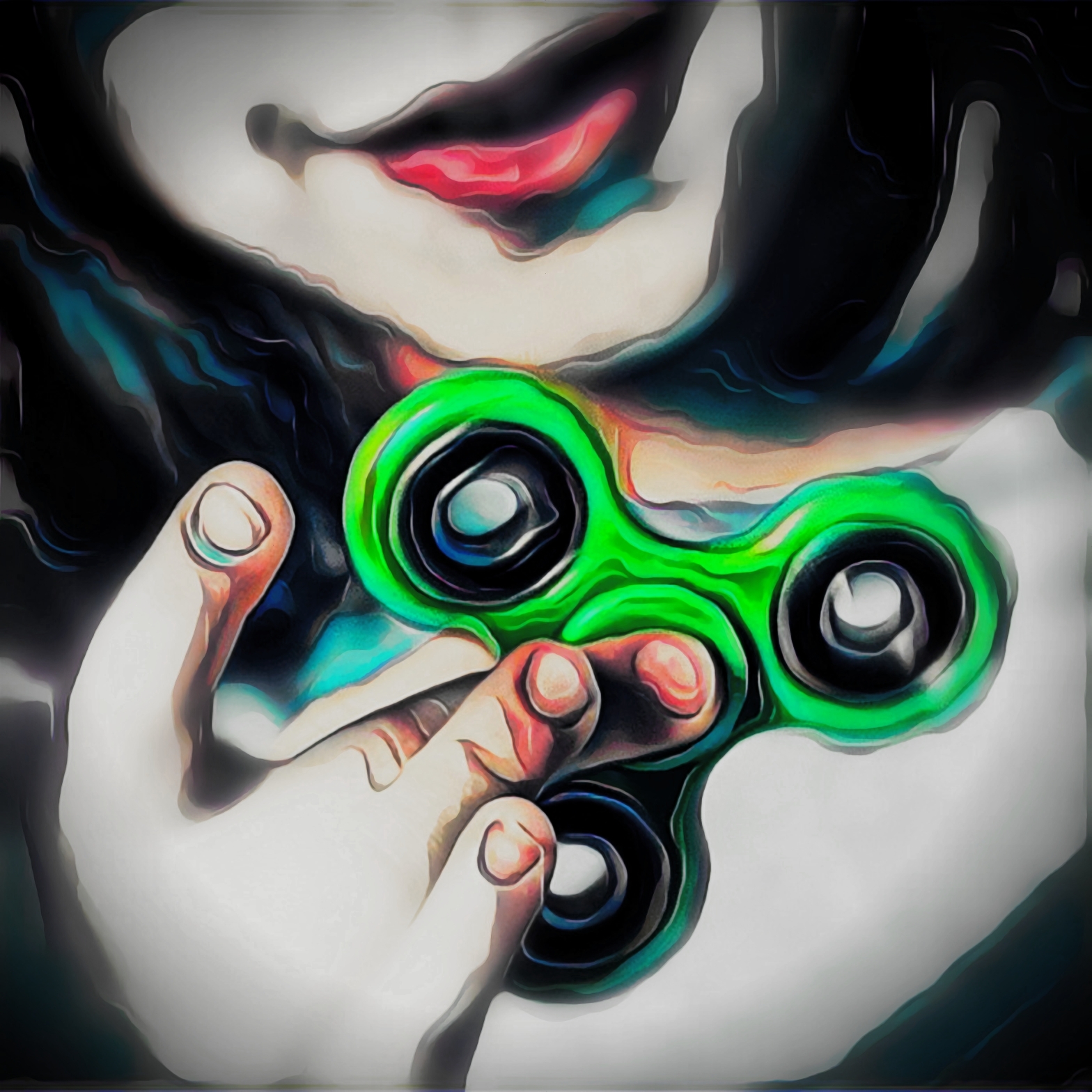 This piece accompanies a podcast which I will link in the alt text, this shows a fidget spinner, a small toy many are probably familiar with from its brief status as a super-trend. For a short time, almost everyone had at least one, and just as quickly many got tired of them and put them away permanently. Yet, for many people on the autism spectrum (and, of course, those who experience a wide variety of neurodivergencies) continue to utlize them as a tool for stimming. Stimming is a behavior which most people exhibit, but in Autism it can be present quite frequently as a characteristic that is commonly recognized clinically. Stimming refers to repetitive behaviors such as spinning, making the same sound repeatedly, rocking, and fidgeting and serve a number of purposes- it can help to regulate emotions and sensory experiences and express emotion. I, personally, still use a fidget spinner as it helps to relax me by occupying my hands and giving something physical to focus on when overwhelmed. Stimming is frequently medicalized and seen with a clinical lense, yet it is so much more than a medical sign- it can be a point of identity, joy, and connection.
This piece accompanies a podcast which I will link in the alt text, this shows a fidget spinner, a small toy many are probably familiar with from its brief status as a super-trend. For a short time, almost everyone had at least one, and just as quickly many got tired of them and put them away permanently. Yet, for many people on the autism spectrum (and, of course, those who experience a wide variety of neurodivergencies) continue to utlize them as a tool for stimming. Stimming is a behavior which most people exhibit, but in Autism it can be present quite frequently as a characteristic that is commonly recognized clinically. Stimming refers to repetitive behaviors such as spinning, making the same sound repeatedly, rocking, and fidgeting and serve a number of purposes- it can help to regulate emotions and sensory experiences and express emotion. I, personally, still use a fidget spinner as it helps to relax me by occupying my hands and giving something physical to focus on when overwhelmed. Stimming is frequently medicalized and seen with a clinical lense, yet it is so much more than a medical sign- it can be a point of identity, joy, and connection.
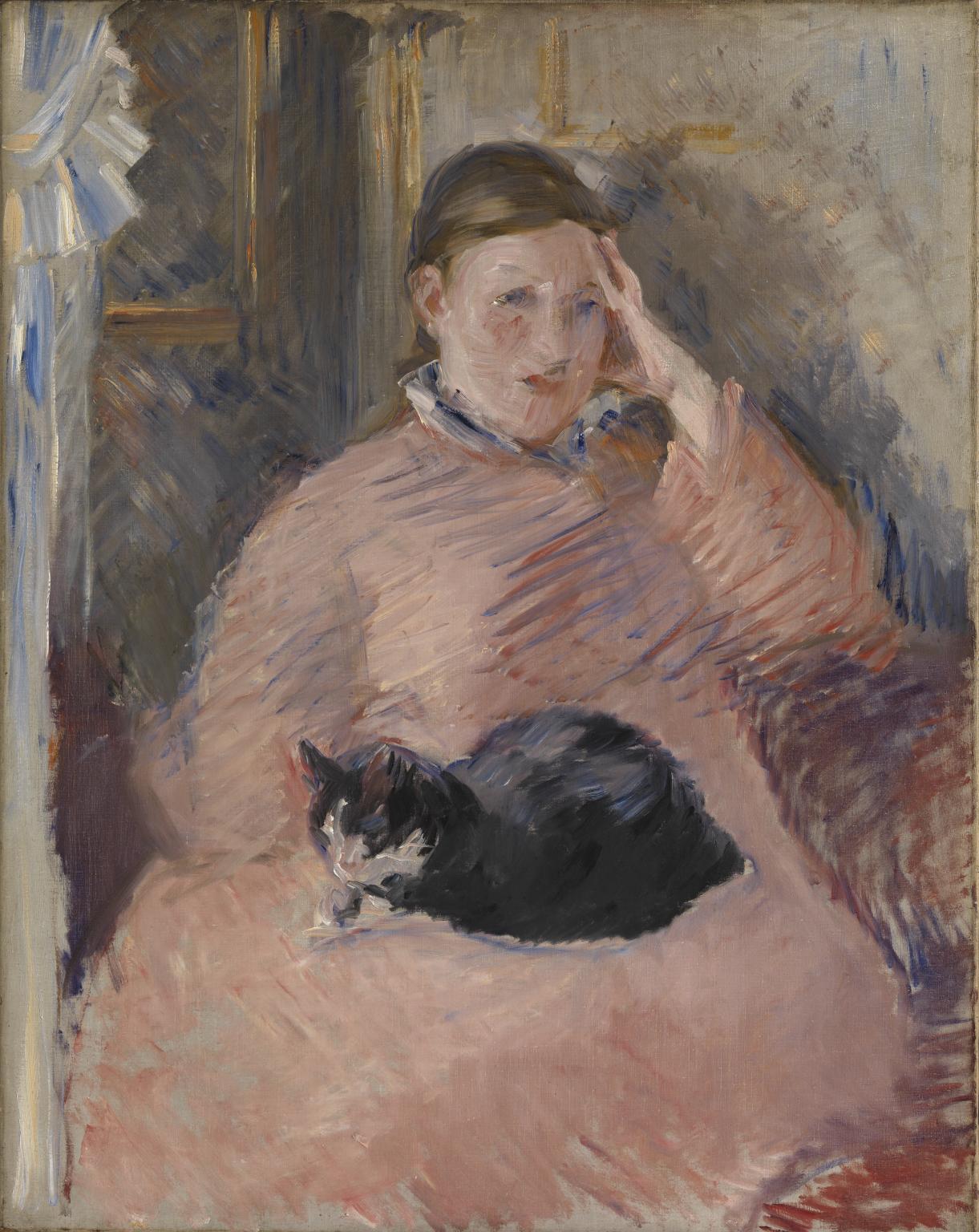 This piece is a bit more subdued than many of the pieces I have shared so far, yet I found it very poignant. This portrait shows the artist's wife who experienced chronic pain and partial paralysis in her lifetime, which is reflected in this portrait as she sits looking pained and tense even while relaxing with her cat. The fact that she sat for this painting expresses to me a concept many may be unfamiliar with- Access Intimacy. Access intimacy is an aspect of relationships somewhat unique to the experiences of disabled people, allowing someone to see you, spend time with you, and interact with you when you are in the vulnerable position of being in pain or in need of help most would not need is an intimate experience which can leave people feeling vulnerable and exposed. Sharing that with your partner, allowing them to see you and care for you is difficult, and to be trusted to care for someone is something which can take quite a lot of time to work up to.
This piece is a bit more subdued than many of the pieces I have shared so far, yet I found it very poignant. This portrait shows the artist's wife who experienced chronic pain and partial paralysis in her lifetime, which is reflected in this portrait as she sits looking pained and tense even while relaxing with her cat. The fact that she sat for this painting expresses to me a concept many may be unfamiliar with- Access Intimacy. Access intimacy is an aspect of relationships somewhat unique to the experiences of disabled people, allowing someone to see you, spend time with you, and interact with you when you are in the vulnerable position of being in pain or in need of help most would not need is an intimate experience which can leave people feeling vulnerable and exposed. Sharing that with your partner, allowing them to see you and care for you is difficult, and to be trusted to care for someone is something which can take quite a lot of time to work up to.
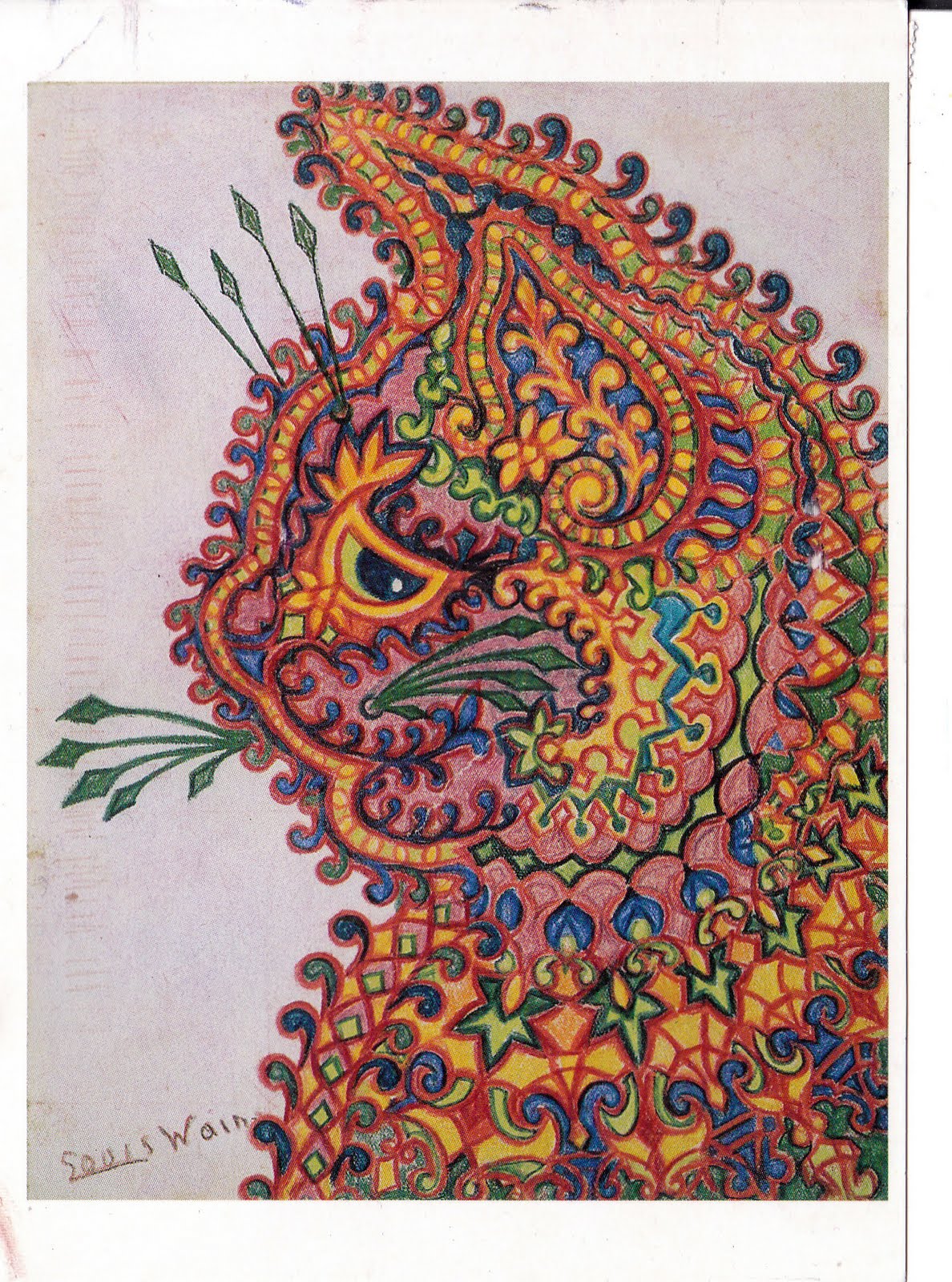
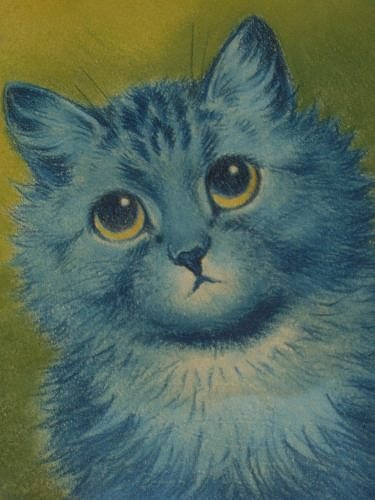 The narrative about Louis Wain is often one that is deeply entrenched in the ableist narrative of a “tortured artist” and in stereotypes about psychosis and Schizophrenia. The common story is that Louis Wain was a tortured man trapped by his mental illness whose artwork became progressively more abstract as disease took his mind. I wanted to include his work to refute this common narrative- Louis Wain was not trapped by mental illness with visible deterioration in his artworks- cats were his muse, and he was experimental with his style throughout his entire art career from his first cat to his very last. Little is known about Louis Wain’s mental illness and whether or not he even experienced psychosis is up for debate as he was hospitalized in an era where clear diagnostics that differentiated between conditions were not used. I highlight him as an exceptional and passionate artist who has become an unwitting figure of ableist narratives, who deserves instead to be known by the passion and joy imbued in his works. I include two of his pieces here, one in a vibrant geometric style and one in a softer illustrative style not to contrast them as if they are by an artist before and after madness, but to encourage you to see how that narrative falls away when you see the consistent stylistic markers and intentionality between the two.
The narrative about Louis Wain is often one that is deeply entrenched in the ableist narrative of a “tortured artist” and in stereotypes about psychosis and Schizophrenia. The common story is that Louis Wain was a tortured man trapped by his mental illness whose artwork became progressively more abstract as disease took his mind. I wanted to include his work to refute this common narrative- Louis Wain was not trapped by mental illness with visible deterioration in his artworks- cats were his muse, and he was experimental with his style throughout his entire art career from his first cat to his very last. Little is known about Louis Wain’s mental illness and whether or not he even experienced psychosis is up for debate as he was hospitalized in an era where clear diagnostics that differentiated between conditions were not used. I highlight him as an exceptional and passionate artist who has become an unwitting figure of ableist narratives, who deserves instead to be known by the passion and joy imbued in his works. I include two of his pieces here, one in a vibrant geometric style and one in a softer illustrative style not to contrast them as if they are by an artist before and after madness, but to encourage you to see how that narrative falls away when you see the consistent stylistic markers and intentionality between the two.
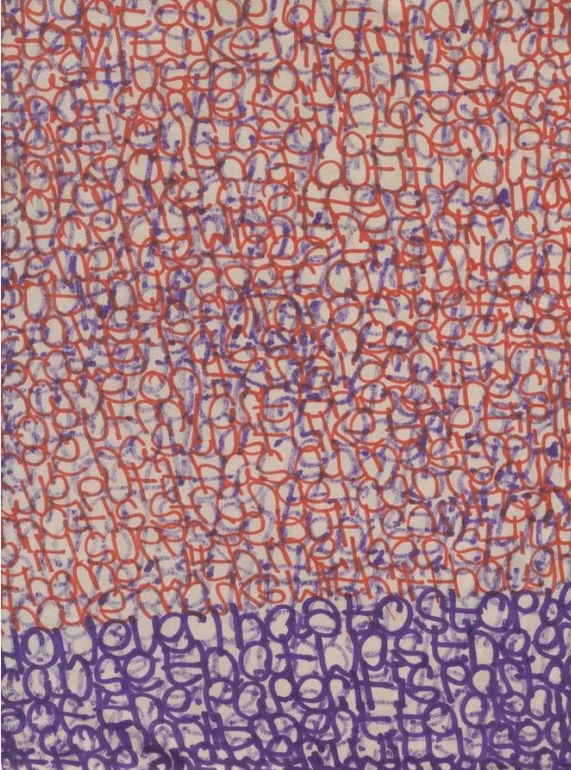 Jennifer Crowe’s art is that of repetition, each piece of hers consists of layered, repeated text which covers the base paper. The result is an elaborately dense piece, almost lace-like in how the text blends together and creates a pattern- your eyes skip around the piece as you recognize familiar shapes of letters yet the sheer volume of text makes it impossible to make out the individual words and phrases that make it up. Behaviors of repetition are often deeply medicalized, considered at best a benign quirk and at worst something to be trained out of a patient with force. To me, Crowe’s work confronts that and demands to be seen as beautiful, artistic, and valuable. Her pieces may seem deceptively simple in how they are created, but I encourage those viewing them to consider- just how long does it take to write enough to cover a canvas several times over, even on a small scale? How much time, work, and effort has gone into these works? Could you do it? For more of Jennifer Crowe’s art and to see portfolios of other artists visit https://www.visionariesandvoices.com/portfolios
Jennifer Crowe’s art is that of repetition, each piece of hers consists of layered, repeated text which covers the base paper. The result is an elaborately dense piece, almost lace-like in how the text blends together and creates a pattern- your eyes skip around the piece as you recognize familiar shapes of letters yet the sheer volume of text makes it impossible to make out the individual words and phrases that make it up. Behaviors of repetition are often deeply medicalized, considered at best a benign quirk and at worst something to be trained out of a patient with force. To me, Crowe’s work confronts that and demands to be seen as beautiful, artistic, and valuable. Her pieces may seem deceptively simple in how they are created, but I encourage those viewing them to consider- just how long does it take to write enough to cover a canvas several times over, even on a small scale? How much time, work, and effort has gone into these works? Could you do it? For more of Jennifer Crowe’s art and to see portfolios of other artists visit https://www.visionariesandvoices.com/portfolios
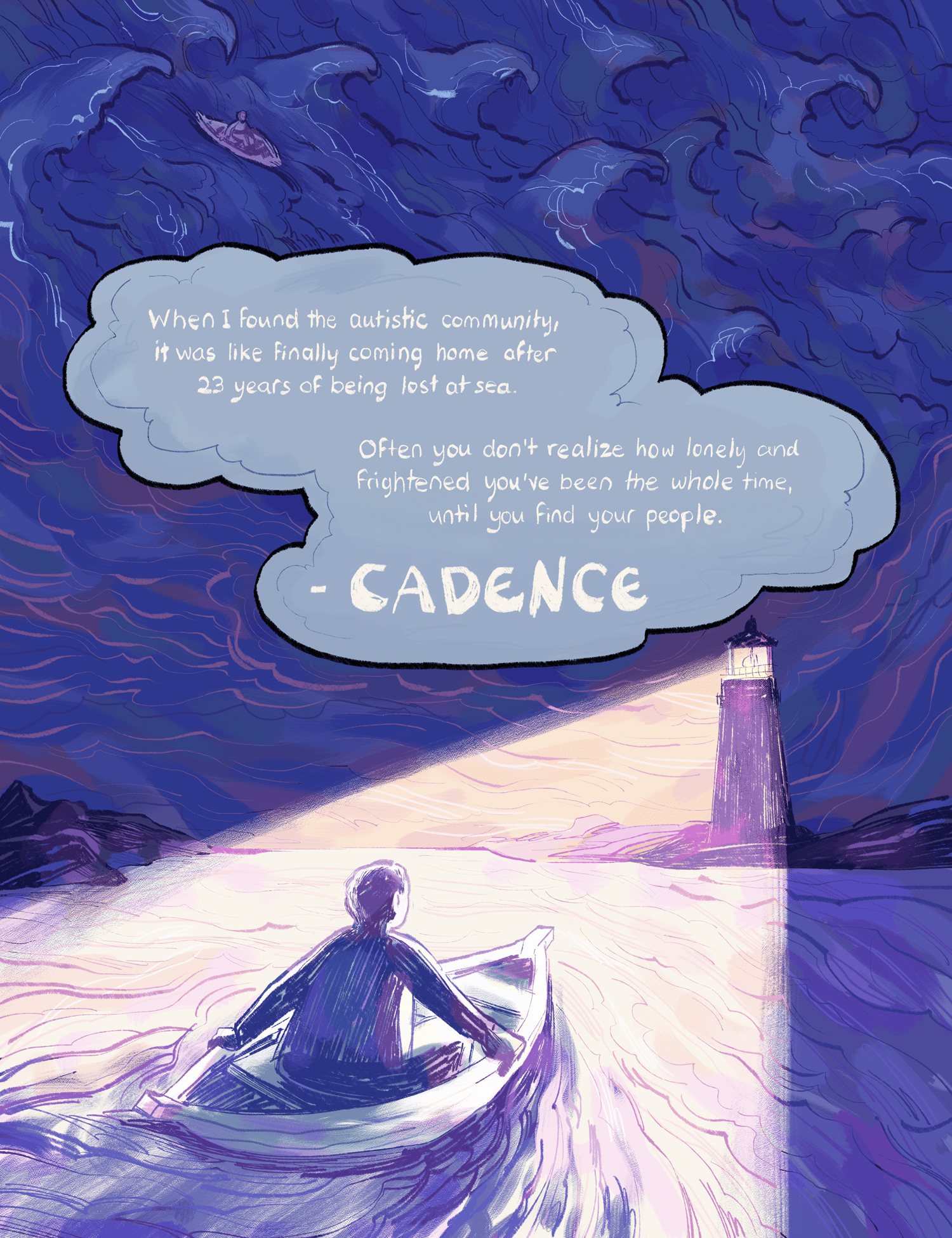 This illustration by Ashanti Forston especially resonated with me, being recently diagnosed officially as autistic has been a wild ride, and one which has finally answered a “big question” of my life. This piece describes feeling lost at sea finally coming home as the experience of finding autistic community. I find this to be an apt description: all you are which was shamed, ignored, tolerated is now something shared with millions. If you were always feeling like a leftover floating around everyone else, finding that there are people out there who know what you need to feel whole, who understand that you will not be quite on the beat the way most are, is a relief I don’t entirely have words for. Community is important, humans are social animals and when you’ve spent your life on the outside looking in, finding out you aren’t alone after all is unspeakably freeing. For more like this piece, visit https://disabilityvisibilityproject.com/2022/08/24/community-as-home-portraits/
This illustration by Ashanti Forston especially resonated with me, being recently diagnosed officially as autistic has been a wild ride, and one which has finally answered a “big question” of my life. This piece describes feeling lost at sea finally coming home as the experience of finding autistic community. I find this to be an apt description: all you are which was shamed, ignored, tolerated is now something shared with millions. If you were always feeling like a leftover floating around everyone else, finding that there are people out there who know what you need to feel whole, who understand that you will not be quite on the beat the way most are, is a relief I don’t entirely have words for. Community is important, humans are social animals and when you’ve spent your life on the outside looking in, finding out you aren’t alone after all is unspeakably freeing. For more like this piece, visit https://disabilityvisibilityproject.com/2022/08/24/community-as-home-portraits/
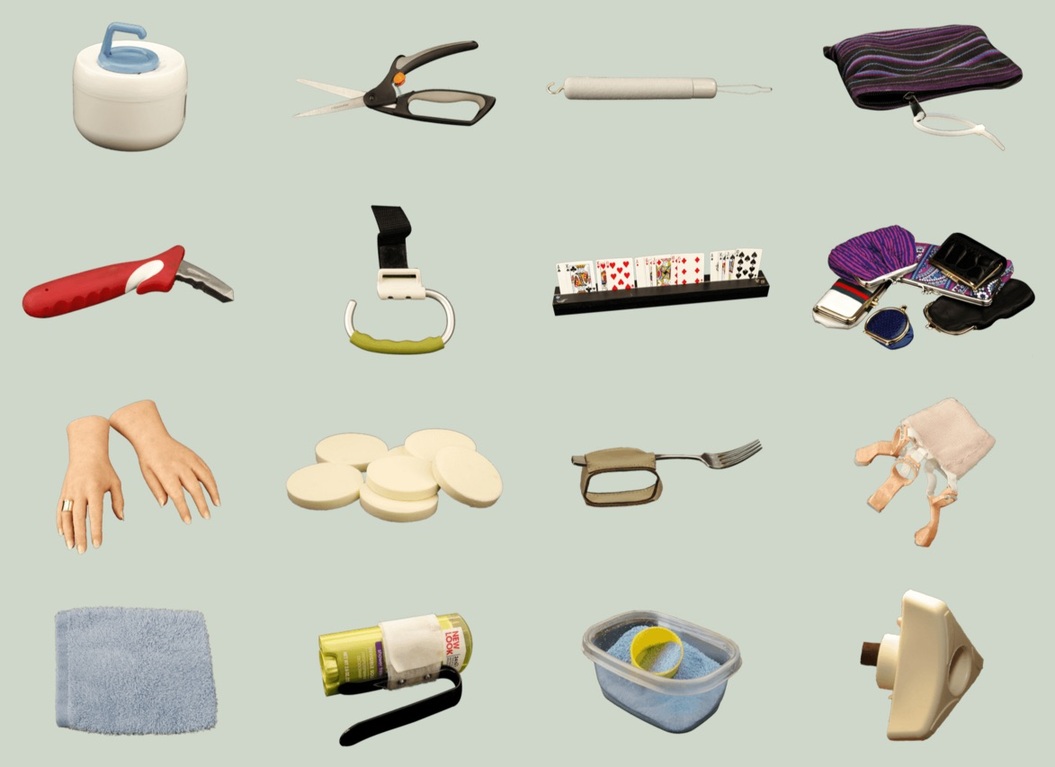 Engineering at Home is an archive of adaptive technology made by one woman to make her home and daily life more accessible to her as an amputee. Some of her solutions are made by a prosthetist (someone who makes prosthetics) and some are made by herself. Each item is a tiny glimpse into how malleable our world is- how simple the solution can be and yet how wide-reaching the need is. Sometimes it feels like a reflection of pure humanity, how many can honestly say they have thought about the inaccessibility of an eyeliner pencil? And who says if one person’s solution to a problem counts as engineering or not? Though the project website is no longer active, I hope the summary found at https://sarahendren.com/projects-lab/engineering-at-home/ inspires you to think about these questions and consider the nature of adaptability
Engineering at Home is an archive of adaptive technology made by one woman to make her home and daily life more accessible to her as an amputee. Some of her solutions are made by a prosthetist (someone who makes prosthetics) and some are made by herself. Each item is a tiny glimpse into how malleable our world is- how simple the solution can be and yet how wide-reaching the need is. Sometimes it feels like a reflection of pure humanity, how many can honestly say they have thought about the inaccessibility of an eyeliner pencil? And who says if one person’s solution to a problem counts as engineering or not? Though the project website is no longer active, I hope the summary found at https://sarahendren.com/projects-lab/engineering-at-home/ inspires you to think about these questions and consider the nature of adaptability